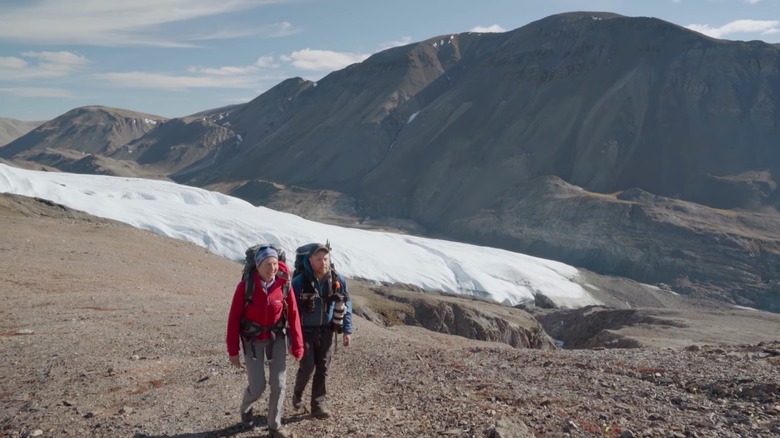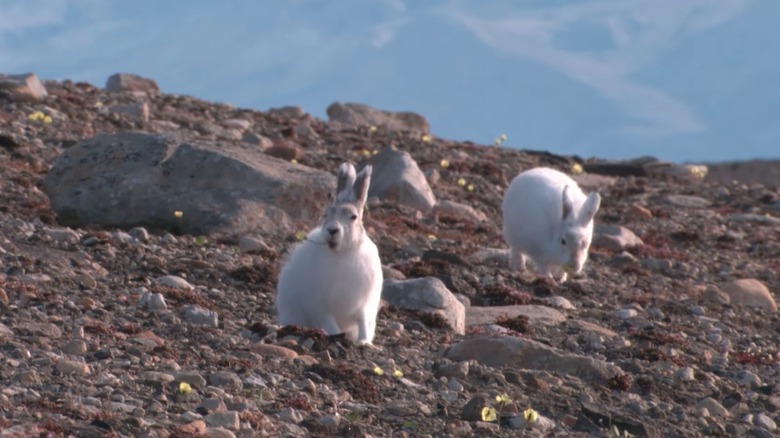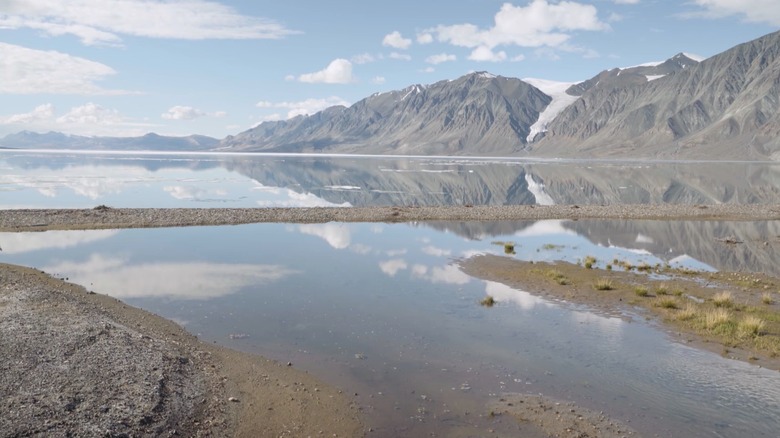YouTube/Parks Canada
National Parks are world treasures. They guard endangered species, conserve natural resources, and protect areas of the world to preserve them for future generations to visit and experience. Some national parks, like the United States’ Yellowstone, are frequently visited and can often attract large crowds. Others are a bit harder to get to and are only for hardier folk.
One such place, Qausuittuq National Park, lies in Canada. In fact, it’s one of the least-visited parks in the country, despite its incredible beauty. If you want an adventure and you’re someone who is very self-sufficient in the outdoors, even in low temperatures, then this might just be a dream vacation for you. Qausuittuq, pronounced Kow-soo-ee-took and meaning “a place where the sun doesn’t rise” in Inuktitut, is full of clear lakes and incredible wildlife, including the endangered Peary caribou, snow-capped mountains, and clear lakes. Qausuittuq isn’t an easy place to get to, and you should really only try it during the summer because the winter average temperatures can get to around -26 Fahrenheit (even in July, the average temperature is only 41 degrees). Let’s take a look at the 4,200-square-mile Qausuittuq National Park, what you can and cannot do there, and what you absolutely must know before you go.
All about Qausuittuq National Park

YouTube/Parks Canada
Qausuittuq National Park only got that status in 2015, so it’s a fairly new park, encompassing a large chunk of Bathurst Island, the Governor General Islands, and the Seymour Island Migratory Bird Sanctuary. You’ll find all sorts of environments including wetlands, uplands, hills, and plateaus. It’s one of the coldest and driest places in the world. There isn’t a lot of plant life, but there are some hardy species like lichens, mosses, dwarf willows, and the stunning purple saxifrages. You’ll find all sorts of animals in addition to the Peary caribou, like polar bears, arctic foxes, arctic wolves, snow geese, snowy owls, beluga whales, narwhals, bearded seals, walruses, and more.
There is evidence of human activity on Bathurst Island going back 4,500 years, and there was oil drilling in the 1960s and ’70s. There has been a big effort to clean up the remnants of that work, like discarded oil drums. Qausuittuq National Park is currently managed by the Inuit and Parks Canada.
There is plenty to do in the park, but there are no facilities. That means no official campsites (though you can camp there), no bathrooms, no supply places, no food stores, nothing. You can only get there by plane, and there are a number of rules in this park that you must abide by.
What you need to know before you visit Qausuittuq National Park

YouTube/Parks Canada
Like many of the coldest places in the world, you need to be prepared for whatever the cold weather throws at you. You’ll have to pack everything in and out, so that means you should be comfortable living only out of a backpack (that includes taking toilet paper out of the park with you). You’ll also have to fly in and out by chartering a plane in Resolute Bay, which is about 124 miles southeast of the park.
There is a fee of $16 a day for excursions that take a day and $33.25 per night, per person to camp, though people under 17 are free. Before you go, you should check the website for safety bulletins, and you must register when you leave and de-register when you come back. To do so, you have to call the Qikiqtani Inuit Association for permission at 1-800-667-2742. There is an orientation at registration with the information you need. That includes the gear you need, places you shouldn’t go or camp (like archeological sites), and polar bear sightings.
You’ll also get the rules, like not setting fires. You can, however, have a naphtha stove that uses white gas. White gas can be purchased in Resolute Bay (but call ahead to check that suppliers have it in stock). That’s important to note because white gas is difficult to fly with, as it’s considered a dangerous material. Unless you’re part of the Nunavut Agreement for traditional activities, you cannot hunt here. You also cannot bring animals with you, including sled dogs and service animals.

